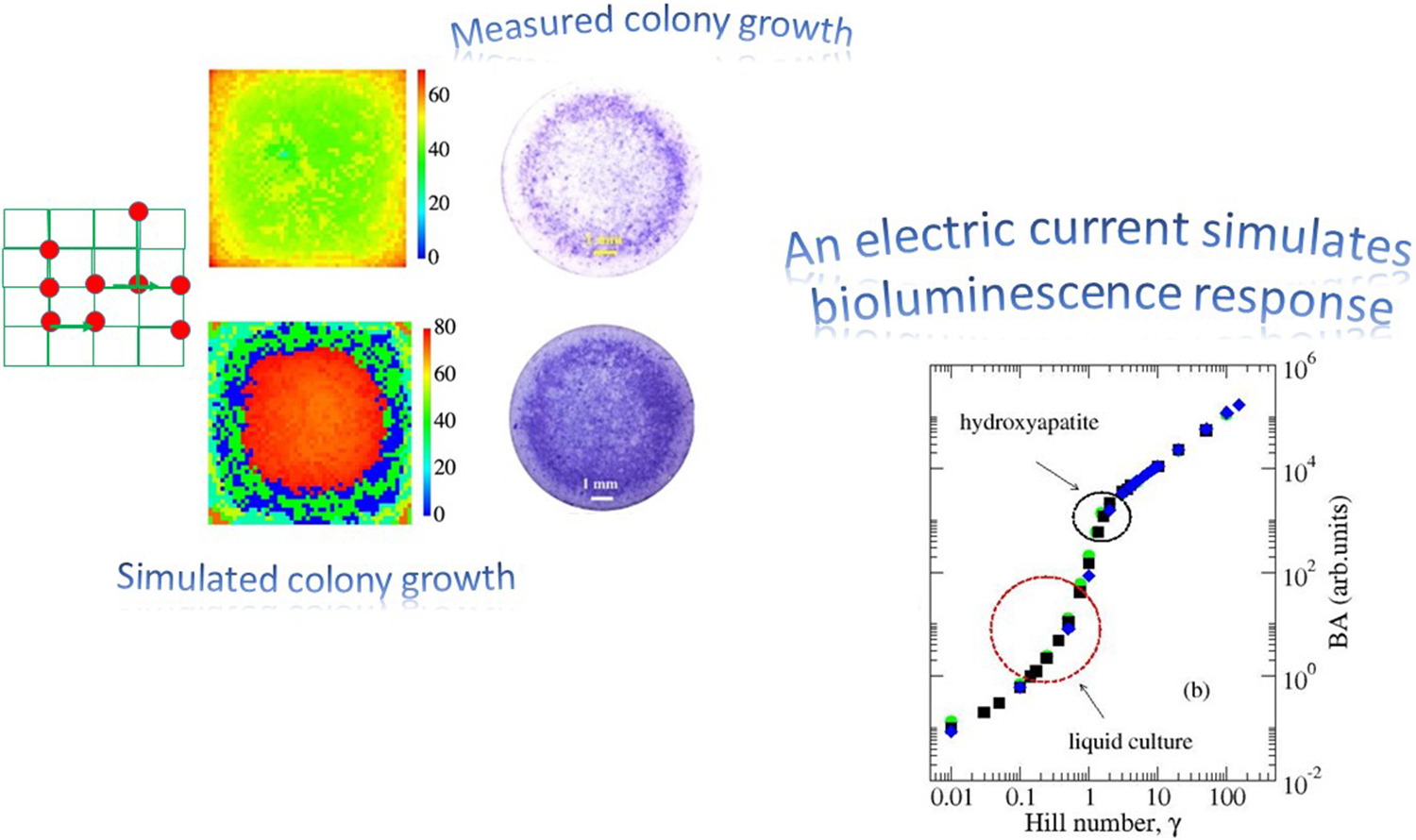https://doi.org/10.1140/epje/s10189-023-00352-0
Regular Article – Living Systems
Cooperation in bioluminescence: understanding the role of autoinducers by a stochastic random resistor model
1
Dipartimento di Matematica e Fisica ‘Ennio De Giorgi’, Università del Salento, Via Arnesano, 73100, Lecce, Italy
2
Istituto Nazionale di Fisica Nucleare - Sezione di Lecce, Via Arnesano, 73100, Lecce, Italy
3
National Biodiversity Future Center, 90133, Palermo, Italy
a
eleonora.alfinito@unisalento.it
Received:
9
August
2023
Accepted:
23
September
2023
Published online:
9
October
2023
Quorum sensing is a communication mechanism adopted by different bacterial strains for the regulation of gene transcription. It takes place through the exchange of molecules called autoinducers. Bioluminescence is an emergent threshold phenomenon shown by some bacteria strains. Its precise relationship to quorum sensing is a debated topic, particularly regarding the role of the different autoinducers used by bacteria. In this paper, assuming a direct relationship between bioluminescence and quorum sensing, we investigate the role of multiple autoinducers in the bioluminescence response of Vibrio harveyi, considered as a model bioluminescent strain, due to its quorum sensing circuitry involving an array of three different autoinducers. Experiments on mutants of this bacterium, obtained by suppression of one or more autoinducers, reveal their relative non-trivial relevance and cooperative interaction patterns. The proposed analysis is implemented on a regular lattice, whose nodes represent microbial entities equipped with charges, which represent the ability to up/down regulate the gene expression. Quorum sensing results from a Coulomb-type field, produced by the charges. In analogy with random resistor network models, the lattice is permeated by an effective current which accounts for the amount and distribution of the charges. We propose that the presence of different autoinducers correspond to a different up/down regulation of gene expression, i.e., to a different way to account for the charges. Then, by introducing a modulation of the charge dependence into the current flowing within the network, we show that it is able to describe the bioluminescence exhibited by V. harveyi mutants. Furthermore, modulation of the charge dependence allows the interactions between the different autoinducers to be taken into account, providing a prediction regarding the data obtainable under specific growth conditions.
© The Author(s) 2023
 Open Access This article is licensed under a Creative Commons Attribution 4.0 International License, which permits use, sharing, adaptation, distribution and reproduction in any medium or format, as long as you give appropriate credit to the original author(s) and the source, provide a link to the Creative Commons licence, and indicate if changes were made. The images or other third party material in this article are included in the article's Creative Commons licence, unless indicated otherwise in a credit line to the material. If material is not included in the article's Creative Commons licence and your intended use is not permitted by statutory regulation or exceeds the permitted use, you will need to obtain permission directly from the copyright holder. To view a copy of this licence, visit http://creativecommons.org/licenses/by/4.0/.
Open Access This article is licensed under a Creative Commons Attribution 4.0 International License, which permits use, sharing, adaptation, distribution and reproduction in any medium or format, as long as you give appropriate credit to the original author(s) and the source, provide a link to the Creative Commons licence, and indicate if changes were made. The images or other third party material in this article are included in the article's Creative Commons licence, unless indicated otherwise in a credit line to the material. If material is not included in the article's Creative Commons licence and your intended use is not permitted by statutory regulation or exceeds the permitted use, you will need to obtain permission directly from the copyright holder. To view a copy of this licence, visit http://creativecommons.org/licenses/by/4.0/.






